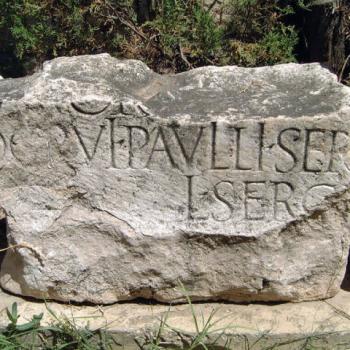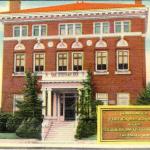One of the more important issues in regard to personalia in the NT, is who exactly was this Erastos mentioned in Rom. 16.23 and what was his job. He appears to be a convert to the new faith, presumably via Paul, and he lives in Corinth or one of its seaports, where Paul is currently residing. He is probably the same person mentioned in the famous inscription ‘Erastus pro aedilite S.V. stravit’ found in front of the stadium in Corinth (I’m not buying the recent theory that the stone was moved to this locale from somewhere else and probably refers to a second century Erastus). The inscription means ‘Erastus for the office of aedile paved this parking lot’, to put it colloquially. In other words, he performed a public ‘liturgy’ (leitourgos) a public service as part of his campaign to show he was civic minded and would make a good aedile. The term Paul uses to describe Erastos in Rom. 16 is ‘oikonomos of the city’, so clearly not a household steward of some wealthy villa owner. Here is what Strongs says about the meaning of ‘oikonomos’
“Luke 16:1, 3, 8; ὁ οἰκονόμος τῆς πόλεως, the superintendent of the city’s finances, the treasurer of the city (Vulg.arcarius civitatis): Romans 16:23 (of the treasurers or quaestors of kings, Esther 8:9; 1 Esdr. 4:49; Josephus, Antiquities 12, 4, 7; 11, 6, 12; 8, 6, 4).” In short he was the city treasurer, among other tasks. Lindsey Davis for example describes the panoply of his jobs to include the following— repair of temples, sewers, and aqueducts; street cleaning and paving (see the above inscription); traffic regulation; tending to dangerous animals, dilapidated buildings and other fire hazards; superintending the baths and taverns; enforcing anti-gambling and usury laws; the care of public morals including prevention of foreign superstitions. (L.D. in her ‘The Ides of April’ pp. 124-25). It is this last bit that is of interest to me at this moment.
If we ask the question how Erastos/Erastus had come to be converted to Christ, one can easily imagine the following scenarios— he came to a shop in Corinth where there were leather workers, including Paul. He may have come to collect rent for the city, or he may have come to investigate the rumor that the merchants in this shop were propagating a new and dangerous superstition. Either way it was his job to set things straight as maintainer of the social order. He was not simply a tax or toll or rent collector. Somewhere along the way, Paul or Priscilla or Aquila or some combination of these folks had gotten to know Erastos/Erastus rather well and led him to Christ. In Romans he is sending greetings to various Christians in Rome. He is clearly enough a fairly high status Christian himself, and Paul has mentioned more than a few of these in his greeting card in Rom. 16. It is fair to say that the inscription in stone in Corinth, and this notice in Rom. 16.23 probably provide us with one of the rare instances of direct confirmation of something the Bible, someone the Bible mentions, through archaeological discovery. But it doesn’t just confirm the existence of Erastus/Erastos. It also confirms what Paul says was his role in the city. And this is very significant indeed. Though Paul tells us in 1 Cor. 1 that not many of his converts in Corinth were high born, noble, socially elite, without question some were, and it was they who probably provided houses for the Christian meetings in Corinth (See my A Week in the Life of Corinth). One more thing. An aedile had to be at least 36 years of age to hold such an office. Erastos/Erastus was not converted when he was young and experimenting with various religions.













